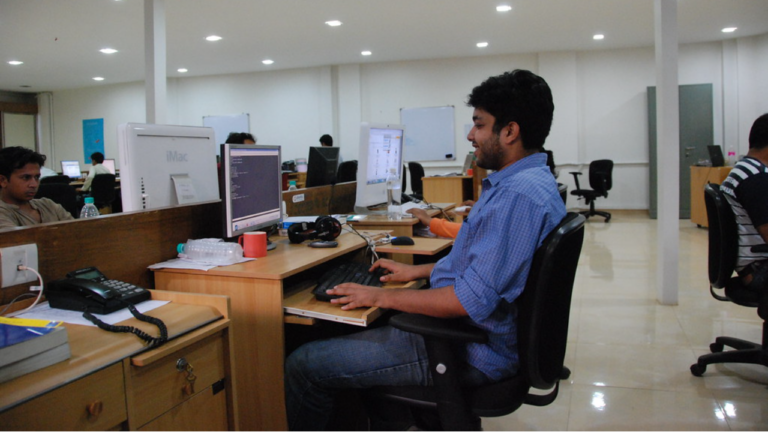How Employee Monitoring Software Works

There are many benefits to implementing employee monitoring software in your organization. However, it’s important to understand how these tools work, particularly if you’re not familiar with them.
Employee monitoring software works by tracking and recording important employee activity data and generating reports. For example, it has features that record when the user becomes active, the applications that the user visits, or any programs they download.
If you’re looking to implement employee monitoring software in your business, read below to learn more about how it works.
What is Employee Monitoring Software?
Employee monitoring software is a program that allows employers to keep track of what their employees are doing at work. Not only does it make workers more invested in their line of work, but it also helps reduce the likelihood of sensitive data being stolen.
Software like Wolfeye monitors the amount of time workers spend on non-productive tasks and the programs they use on their computers. It even determines the peak activity times for each employee throughout the day.
This gives your business a better view of the overall workflow, regardless of whether workers are physically present in the office or not.
How Employee Monitoring Software Works

Employee monitoring software includes functionalities that capture and log data pertaining to the user’s computer usage. For instance, employee monitoring software like Wolfeye has the following features:
- Maintains a record of the user’s login time.
- Records the programs that are used.
- Records the websites viewed.
For instance, when a user opens an application, the system registers the application’s name, as well as the time it was launched and closed. This provides the business with detailed information regarding the user’s activity.
All of this data is typically saved on the cloud to prevent the hassle of saving it on the company’s servers. Managers can effortlessly log into the application and monitor every worker’s activity.
Legal Implications of Monitoring Employees
There are many misconceptions regarding the legality of data collection that might discourage you from implementing it. Is it legal to monitor your employees?
Yes, it is. Labor laws in the US allow companies to monitor their employees. For example, this can mean that you can view any emails stored on the company server.
The only legal restrictions pertain to phone calls. Employers cannot legally eavesdrop on their workers’ private phone conversations without the workers’ knowledge and agreement. For all other purposes, the employer does not require consent when the employee is using work-issued devices.
However, certain states have taken further steps towards employee privacy rights. Both Delaware and Connecticut require companies to give workers advance notice before monitoring their communications. Check to see if there are any rules specific to your state before you install any software.
The rules can also vary based on the country you live in. Members of the European Union recognize the importance of privacy in the workplace. Companies are required to be completely transparent when they are tracking employees’ activities.
Every single individual in the European Union must provide their consent before any personal data is gathered, and they must also be informed of the process by which the data is being acquired and the reasons behind it. Check the laws of your country as a precaution before implementing monitoring.
Always inform your employees of your intention to install software and provide a comprehensive explanation of its intended purpose in order to promote trust and achieve the best results. Greater transparency reduces the likelihood of legal complications.
How to Successfully Implement Monitoring Software
If you’re worried about whether you’ll be able to obtain the best results from your monitoring software, follow the tips below to ensure successful implementation:
Reasonable Administration
Think carefully about which websites you want to block and only block in moderation. For example, YouTube might be the first website that comes to mind when you think about restricting usage, but you must reconsider. Your employees could benefit from the many helpful tutorials available on YouTube. Restrict and filter websites in a reasonable manner, and avoid going overboard.
Adjust Expectations
It is impossible for employees to work for eight hours straight. Breaks are important! The key to successful and ethical employee monitoring is to remain empathetic with your employees. The key to successful and ethical employee monitoring is to remain empathetic with your employees.
Remind your employees that you understand their need for breaks and that it’s acceptable for them to take appropriate time off when needed. Lay out certain rules, but leave room for some personal flexibility.
Avoid Spying
Be cautious not to use activity tracking as a surveillance technique. This application is only meant for monitoring productivity and improving company performance. Furthermore, you should never use the data for anything other than business purposes.
Customize the Software
Some programs provide you with a great deal of personalization, so you can modify them to fit your needs. Bear in mind that one size does not fit all; therefore, while one organization may deem certain applications and features unproductive, you may consider them essential.
Make sure to include lunch breaks in your monitoring plans and exclude tracking outside of business hours. Evaluate all of your options to get the software that suits your team’s needs the best.
Develop a Clear Policy
Creating a policy that puts everything on paper can make everyone involved feel further at ease, especially if you involve your employees throughout the implementation. Give some background on the program you’re using, including what it can do, your plans for using it, and why it’s important for your business goals.
Create an Approachable Atmosphere
In the beginning, the use of employee monitoring software may make your employees concerned. It is important to consider their perspective and be open to hearing their concerns in such cases. Make sure to clear out any concerns they have in order to avoid any problems down the road.
Conclusion
So, if you’re thinking of implementing employee monitoring software in your business operations, make sure you familiarize yourself with its features. This will also help you make informed decisions when deciding which software to purchase.